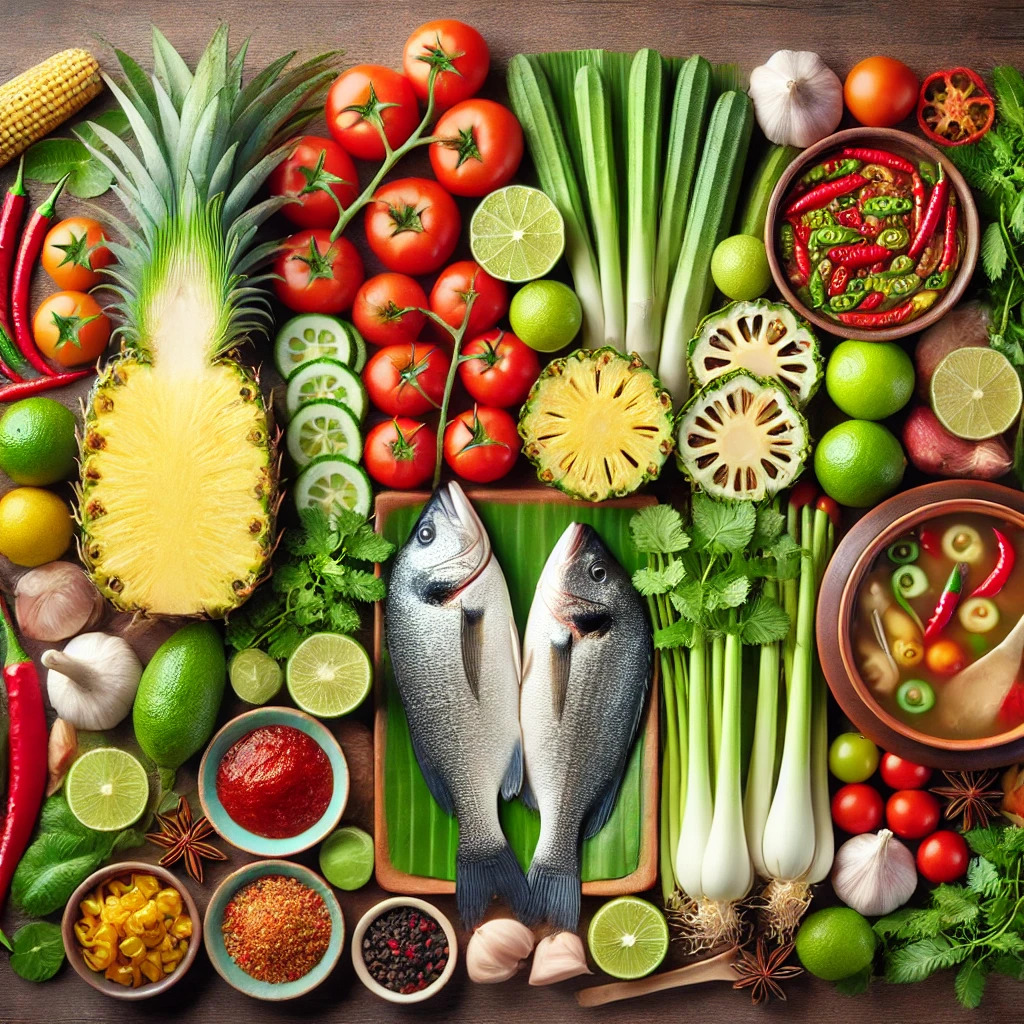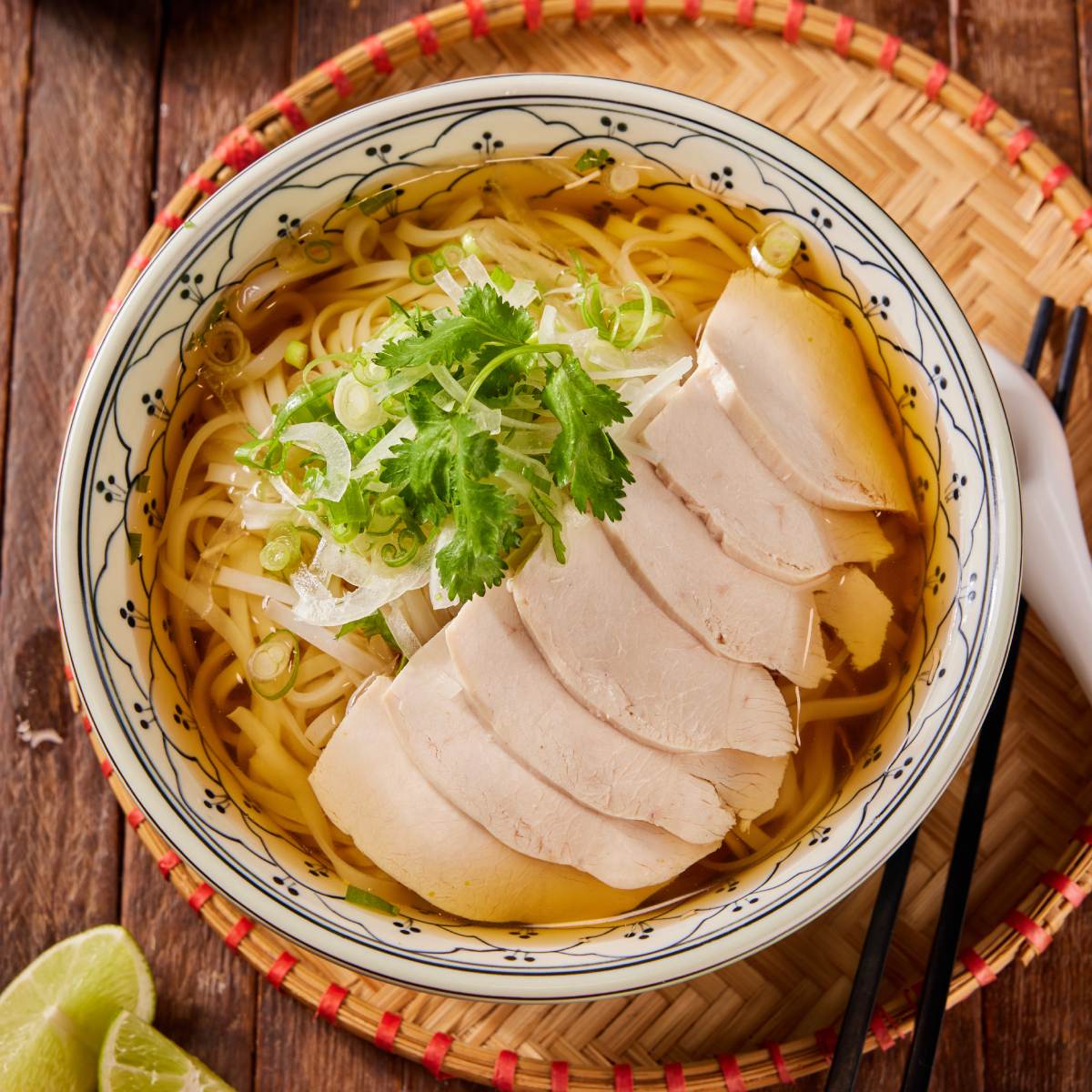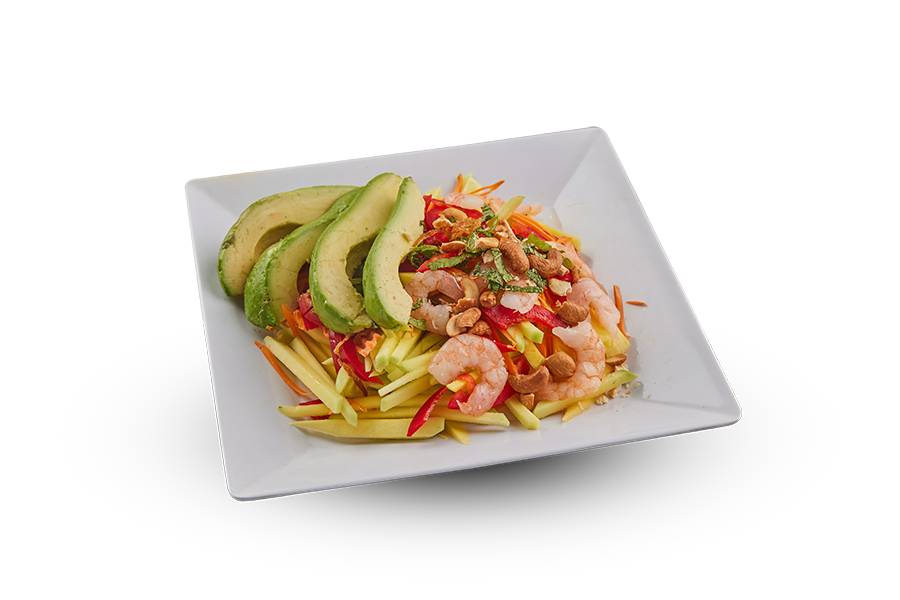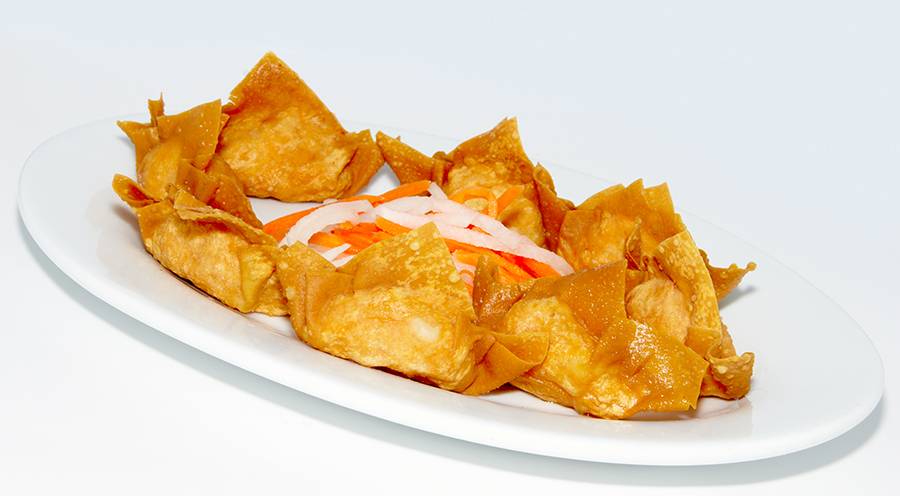What is Canh Chua?
Canh Chua is a traditional soup from the Mekong Delta region of southern Vietnam. The term “canh” means soup, and “chua” translates to sour, so Canh Chua simply means "sour soup." This dish is known for its distinctive tangy flavor, primarily coming from tamarind or other souring agents like pineapple or tomatoes. It’s typically made with fresh fish, but you’ll also find versions with shrimp, chicken, or tofu for a vegetarian option.
The soup is often served with steamed rice to balance out the sourness and make the meal more filling. A variety of fresh herbs and vegetables, such as bean sprouts, okra, tomatoes, and elephant ear stem (bac ha), are added to give the dish its vibrant colors and textures. The combination of sweet and sour, along with the fresh produce and savory fish or meat, makes Canh Chua a deliciously balanced dish.
Ingredients for Canh Chua
Before diving into the recipe, let’s take a look at the key ingredients needed for Canh Chua. These ingredients are relatively simple to find at most Asian grocery stores, and some are likely available at your local supermarket.
Main Ingredients:
Fish (optional): Traditionally, Canh Chua is made with freshwater fish such as catfish, but any white fish like tilapia or snapper will work well. You can also substitute fish with shrimp or chicken for a different protein option. If you prefer a vegetarian version, tofu works great as a substitute.
Tamarind paste: This is the key ingredient that gives the soup its sour flavor. Tamarind paste is made from the pulp of tamarind pods and is commonly found in Asian stores. You can also use fresh tamarind if available.
Pineapple: Fresh pineapple adds a hint of natural sweetness that contrasts beautifully with the sourness of the tamarind.
Tomatoes: Tomatoes add both color and an additional layer of acidity to the soup.
Bean sprouts: These provide a crunchy texture and a fresh flavor to balance the softness of the cooked vegetables.
Okra: Okra adds a slightly gooey texture to the soup, which is characteristic of Canh Chua. If you’re not a fan of okra, you can skip this ingredient.
Elephant ear stem (Bac Ha): This vegetable is often used in Vietnamese cooking, particularly in soups. It has a spongy texture that absorbs the flavors of the soup well.
Garlic: A bit of garlic is sautéed at the beginning to give the soup a fragrant base.
Fish sauce: A staple in Vietnamese cuisine, fish sauce adds depth and umami flavor to the soup.
Sugar: A small amount of sugar is used to balance the sourness of the tamarind.
Fresh herbs: Dill, cilantro, or rice paddy herb (ngò om) are commonly used to garnish the soup and add a burst of fresh flavor.
For Steamed Rice:
Jasmine rice: Jasmine rice pairs perfectly with Canh Chua because of its fragrant aroma and slightly sticky texture. You can also use any type of long-grain rice.
Water: To cook the rice.

Step-by-Step Guide to Preparing Canh Chua
Now that we’ve gone through the essential ingredients, let’s get started with the recipe. This recipe will make about 4-6 servings, perfect for a family meal.
Step 1: Prepare the Rice
Start by cooking the rice, as it will take the longest. Here’s how you can do it:
Measure the rice: For four servings, you’ll need about 2 cups of jasmine rice. Rinse the rice under cold water until the water runs clear to remove excess starch, which helps prevent the rice from becoming too sticky.
Cook the rice: Combine the rice with water in a rice cooker (use 1.5 cups of water for every cup of rice). If you don’t have a rice cooker, bring the rice and water to a boil in a pot, then reduce the heat to low, cover, and let it simmer for 15-18 minutes. Once done, remove the pot from heat and let the rice sit covered for an additional 5 minutes before fluffing with a fork.
While the rice is cooking, you can move on to preparing the soup.
Step 2: Prepare the Tamarind Broth
The broth is the heart of Canh Chua, and it’s where all the flavor comes together.
Dissolve the tamarind: If you’re using tamarind paste, dissolve 2-3 tablespoons in about 1 cup of hot water, stirring until smooth. If using fresh tamarind pods, remove the seeds and soak the pulp in warm water for about 10 minutes, then strain to remove any solids.
Sauté the garlic: In a large pot, heat about 1 tablespoon of vegetable oil over medium heat. Add 2-3 cloves of minced garlic and sauté until fragrant, about 30 seconds to 1 minute.
Add water and tamarind: Add about 6 cups of water to the pot, followed by the dissolved tamarind mixture. Bring the broth to a simmer.
Step 3: Add the Vegetables and Fish
Add the pineapple and tomatoes: Once the broth is simmering, add 1 cup of pineapple chunks and 2 chopped tomatoes. Let them cook for about 5 minutes, allowing the flavors to blend.
Add the fish: If using fish, gently add about 1 pound of fish fillets (cut into 2–3-inch pieces) to the pot. You can also add shrimp or chicken at this point if you prefer. Allow the fish to cook for about 5-7 minutes, or until it’s opaque and flakes easily with a fork.
Add the vegetables: Add 1 cup of okra (cut into 1-inch pieces), 1 cup of bean sprouts, and 1 cup of sliced elephant ear stem (bac ha). Simmer for another 3-5 minutes until the vegetables are tender but still crisp.
Step 4: Season the Soup
Add fish sauce and sugar: Stir in 2 tablespoons of fish sauce and 1 tablespoon of sugar to taste. The soup should have a good balance of sour, sweet, and salty flavors, so adjust the seasoning as needed. If it’s too sour, add a bit more sugar or water. If it’s not sour enough, you can add a little more tamarind paste.
Taste and adjust: Taste the soup and adjust the seasoning to your preference. You can add more fish sauce for saltiness or more sugar for sweetness. If you like a bit of heat, you can add some sliced chili peppers at this stage.
Step 5: Garnish and Serve
Add fresh herbs: Once the soup is done, remove it from heat and stir in a handful of chopped fresh herbs like cilantro, dill, or rice paddy herb (ngò om). These herbs add a fresh, aromatic touch to the soup.
Serve with rice: Spoon the soup into bowls and serve it alongside steamed jasmine rice. Traditionally, Canh Chua is eaten by spooning the soup over the rice or enjoying them side by side.
Tips for Making the Perfect Canh Chua
Choosing the right fish: Freshwater fish like catfish or tilapia are ideal for this soup because they have a mild flavor that pairs well with the tangy broth. If you prefer a firmer texture, try using shrimp or tofu.
Adjusting the sourness: The sourness of Canh Chua can be adjusted to your taste. If tamarind is too strong, you can use more tomatoes or add a splash of lime juice for a milder tang.
Customizing the vegetables: The vegetables in Canh Chua can be easily swapped based on what you have available. If you can’t find elephant ear stem, substitute with celery or zucchini for a similar texture.
Making it spicy: If you enjoy a bit of heat, you can add sliced chili peppers or chili oil to the soup for a spicier kick.
Nutritional Benefits of Canh Chua
Canh Chua is not only delicious but also packed with nutrients. The combination of fresh fish, vegetables, and herbs makes this soup a healthy and well-balanced meal.
Rich in protein: If made with fish, shrimp, or chicken, Canh Chua is a good source of lean protein, which is essential for muscle growth and repair.
Loaded with vitamins and minerals: The fresh vegetables in Canh Chua, such as tomatoes, bean sprouts, and okra, provide vitamins A, C, and K, as well as antioxidants that promote overall health.
Low in calories: This soup is naturally low in calories and fat, making it a great option for those looking for a light but filling meal.
Tamarind’s health benefits: Tamarind is not only flavorful but also has health benefits, including aiding digestion and providing a good source of antioxidants.
Conclusion: The Joy of Making Canh Chua
Canh Chua is more than just a soup—it’s a flavorful journey into the heart of Vietnamese cuisine. The balance of sweet and sour, combined with the freshness of the vegetables and herbs, makes it a perfect dish for any occasion. Whether you’re preparing it for a family meal or introducing friends to the flavors of Vietnam, Canh Chua is sure to be a hit.
By following this guide, you can confidently prepare a bowl of Canh Chua that’s both authentic and delicious. Pair it with steamed rice, sit back, and enjoy the vibrant flavors and the warmth of Vietnamese home cooking.
Here are some delicious food and drinks to try when ordering from PHO restaurants in Toronto:
Udon Noodle Soup with Crab Meat (Bánh Canh Cua)
Udon Noodle Soup with Shrimp (Bánh Canh Tôm)
Butter Chicken Wing (Cánh Gà Chiên Bơ)
Shrimp and Chicken Pad Thai (Padthai Tôm Gà)
Marinated Fish with Steamed Rice (Cá Kho Tộ)
Rare Beef and Beef Ball (Phở Tái, Bò Viên)






















